
HOME � REVIEWS � CONTACT � LINKS � ARCHIVES � FORUMS
 |
| HOME � REVIEWS � CONTACT � LINKS � ARCHIVES � FORUMS |

|
After over a decade of silence following the breakup of Harry Pussy, guitarist Bill Orcutt re-emerged in 2009 with a self-released, limited-run 7-inch, �High-Waisted� b/w �Big Ass Nails,� followed shortly thereafter by a self-released LP, �A New Way to Pay Old Debts�, an art-damaged collection of improvisational acoustic guitar tracks. These releases were remarkable not only for their blunt force, but for the sheer aesthetic breakthroughs taking place. Although informed to some degree by the work of Derek Bailey and Cecil Taylor, Orcutt manages to carve out a violent idiom all his own, adapting the arresting style of guitar-playing previously heard in Harry Pussy to an instrument that, at face value, would seem unable to handle it without snapping in half. In May of 2010, I met with Orcutt for lunch at a dim sum restaurant near his place of work in the San Francisco Bay Area. An altogether friendly and forthright guy, he discussed his recording history, giving special elaboration to his album artwork and the unusual history of his guitar. The following week, he would leave for New Zealand to play a couple of shows, culling together the material that would comprise �Way Down South,� a one-sided 12-inch showcasing the gasping live permutation of his current work. He more recently answered a couple of follow-up questions regarding the release of �Way Down South�, the recent CD issue of �A New Way to Pay Old Debts�, and his future recording plans. TB: How long have you been in the Bay Area for now? TB: So that was right about the time of the last new one you put out prior to �A New Way to Pay Old Debts.� TB: What were you up to artistically in the interim? Were you doing much musically? TB: Do you go out to see music much around here? TB: There was that one solo record before � how does this project differ from that one? I suppose that wasn�t a solo record in the purest sense. TB: I was curious what made it a solo record and not a Harry Pussy record. TB: Am I right to believe that you were going to do this record [�A New Way to Pay Old Debts�] on electric guitar originally? |
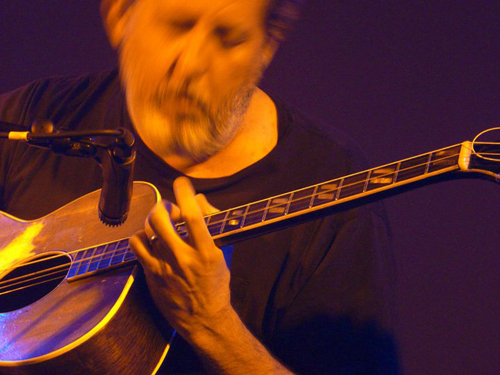
|
TB: Was there anything in particular that provoked you to start playing again? TB: Was it a long process getting this record together? TB: Were you surprised at the level of interest in the new recordings? TB: What�s it been like playing shows again? TB: You played in Belgium? TB: I�m trying to imagine what playing with a drummer would�ve sounded like. Was that an acoustic guitar performance? TB: The acoustic guitar � you string it the same way that you strung your electric guitar, right? TB: With playing shows again, it must be interesting getting invitations to play museums and such. TB: Going back to that guitar you use, is it doctored up that much beyond removing the A and D strings? TB: Do you play in standard tuning? TB: Could you tell me a bit about recording these two records � was it a home recording thing? TB: I suppose you would have to have been recording during the day to avoid any neighborly issues. TB: I really like the artwork on the LP � how�d you come up with that? |
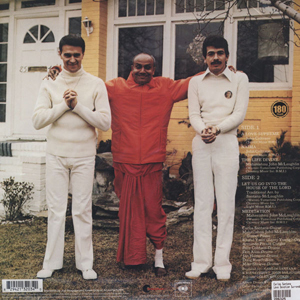
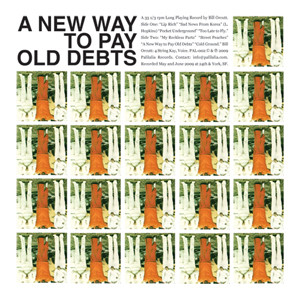
|
TB: Did you do the artwork for all those old releases? TB: That�s funny that you think there�s a certain trashiness required for the artwork. TB: Speaking of computer-related things, I found a video that I�m fairly sure you made that I thought was kind of funny from a couple of years ago where you�re playing a Monome with the �New York Times� web site. TB: With the odd percussion going on, I couldn�t help but draw a connection to your regular music. TB: Interesting you say that as one of them you label as a cover [�Sad News From Korea� by Lightnin� Hopkins]. TB: Yeah, I was listening to the original and thought, �If this is a cover, it�s pretty darn deconstructed.� TB: I had read about some of the names of people who had influenced what you�re doing on this record � some people hear this new stuff and seem to think it�s not in the same domain at all as your own music, but I thought there was a certain continuity. TB: Going back to earlier, playing with a drummer� did that sound much different? TB: Have you been writing or recording any new material? TB: Any more releases on the horizon? TB: So you�re playing New Zealand, New York� TB: Who�s the woman whose face is split with Obama�s face on the back of the 7-inch? TB: Are you planning to self-release stuff down the road? TB: Going back to the stringing of the guitar, I thought it was sort of a blues influence on this record � because it seems like removing that middle range would disconnect it from those sorts of sounds in a lot of ways. |
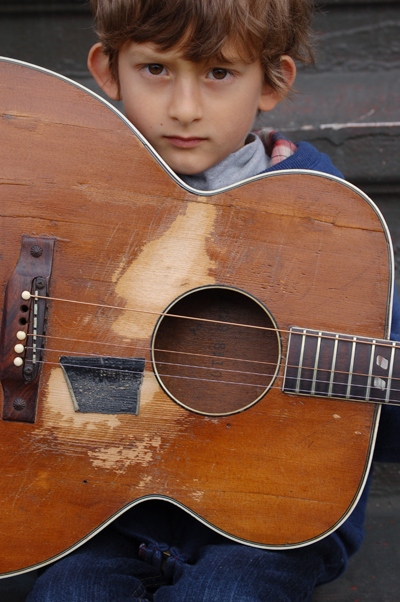
|
TB: That stretching seems to have a lot to do with the kind of violent sound of the recordings. I�ve never really heard a record of acoustic guitar that sounded like the guitar was about to break or snap. TB: Had you played acoustic much in the past? TB: And you were tuned to E before. TB: But you had a sentimental attachment to it. TB: That bridge was on there when you got it? |

|
TB: Are you thinking of collaborating with anyone else at any point in time? [The following questions were answered in follow-up correspondence via email in January of 2011.] TB: Could you tell me a little bit about the recording of �Way Down South�, and what prompted you to release it? When I ran into you at the Berkeley Art Museum show, you were telling me a bit about hanging out with the Dead C guys down in New Zealand on that trip. TB: I noticed that there are a few bonus tracks on the CD reissue of �A New Way to Pay Old Debts,� could you tell me about those? Are they from the same recording sessions as that album? TB: Do you have anything planned currently for future releases or live performances? END INTERVIEW |
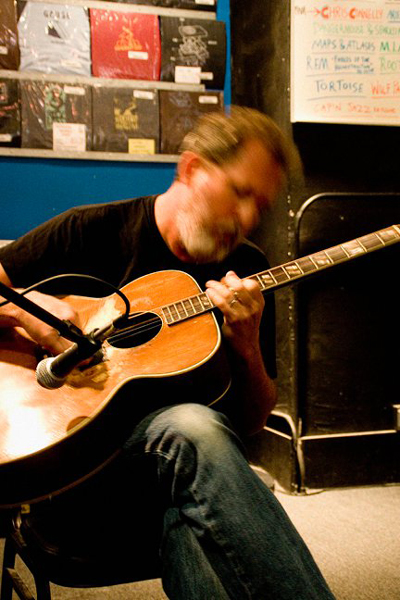
|
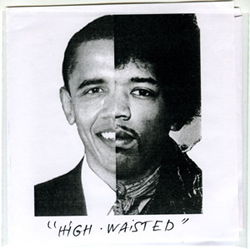
DISCOGRAPHY Bill Orcutt on the web here. Pics provided by Mr. Orcutt, if anyone would like a credit please contact the editor.Interview by Mike Harkin, May 2010/January 2011. To read other TB interviews, go here. |
| PREVIOUS PAGE � HOME � NEXT PAGE |